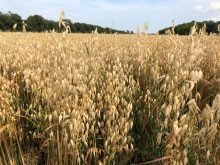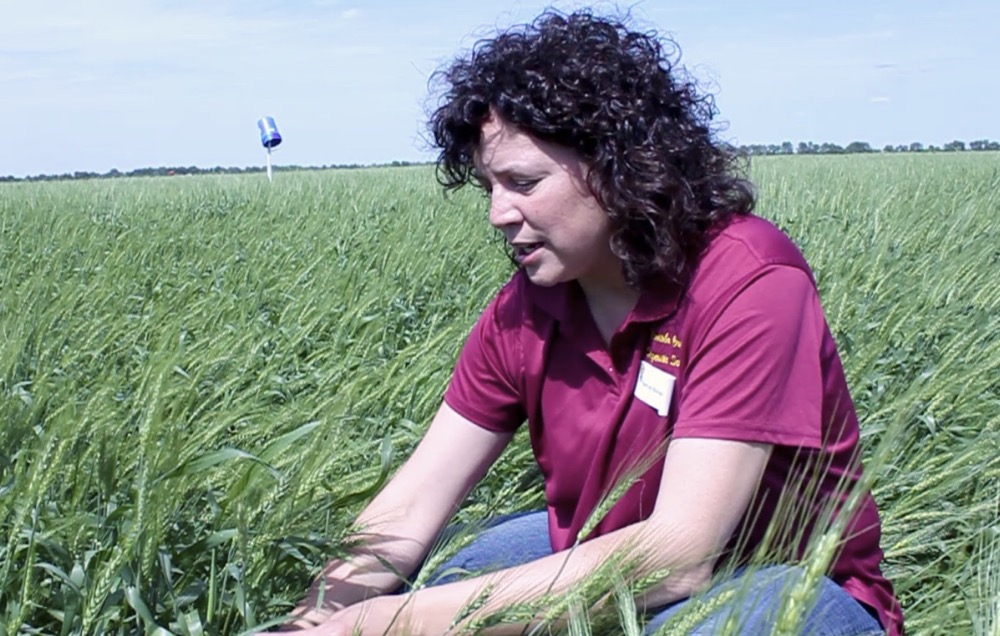Manitoba’s cereal fields were subjected to heavy winds and thunderstorms this year and into late summer, and farmers must now deal with lodging.
Anne Kirk, cereals specialist with Manitoba Agriculture, has seen the problem. Stands that were vertical and looking good were flattened by another round of weather systems in Manitoba Aug. 22.
“It’s pretty disappointing to see,” she told attendees of an Aug. 28 Crop Talk webinar hosted by the province.
Read Also

Time to be honest about hemp, experts say
Years of hype have given way to a more realistic view of hemp. Farmers and processors say the crop’s future depends on solid agronomy, honesty.
Why it matters: Variety choice, fertilization, seeding rates and best practices during harvest will affect management of lodging.
Plants don’t easily bounce back from lodging when it happens near the end of the season, Kirk added.
Producers can expect the worst hit to yields if crops have been flat in the weeks following head emergence. Carbohydrate flow to the head can be disrupted, impacting grain fill.
Harvesting lodged crops is never easy, Kirk noted, but techniques such as driving slowly, adjusting the reel position to lift flattened heads, using lifters and, if necessary, combining all in one direction can minimize yield loss.
“The number one thing is to drive slow and be really patient, because it is going to take longer to combine, and you need to be just patient to get it through the combine,” she said.
Lodging often occurs in headlands, where seeding and nitrogen rates may be concentrated due to multiple passes.
The features of lodging are well known to producers: the stem of the plant weakens or breaks because of heavy rainfall, high winds or hail. The plant collapses at the point of breakage and flattens to the ground. If the roots are underdeveloped, as can happen in wet years, the whole plant tips over.
“When the crop is drying down or ripe … the weight has really shifted to the top of the plant. So, if we have a spike that’s full of heavy seeds, that’s a lot of weight that’s being put on that stem,” Kirk said.
Several factors influence the risk of lodging in cereal crops, including plant height, stem strength and development of root and crown systems. Variety choice affects those factors.
Then there’s nutrition. Over-applying nitrogen wastes money and can cause quick vegetative growth leading to too-tall plants, said Kirk.
“When we have high nitrogen rates, we do see a lot of plant growth and might see longer stems that are a bit weaker.”
High seeding densities can cause weaker root systems due to greater competition among plants, particularly in wet conditions. Kirk highlighted research by Amy Mangin, a doctorate student at the University of Manitoba, who analyzed data from 2018 and 2019 trials that studied how lodging in spring wheat was affected by different agronomic practices.
“She did look at lodging management, and did actually find that seeding rate had a huge impact on lodging in the plants, and one of the main reasons is root development,” Kirk said.
Growth regulators
Some producers look to plant growth regulators to gain the upper hand against lodging, but Kirk urged caution.
“Growth regulators definitely aren’t recommended for every farmer in every situation, but there are times when it may be useful. (They) may be useful … when you have very high yield potential, when you’ve been using a lot of nitrogen and you’re using a variety more susceptible to lodging.”
Growth regulators are the only in-season option in the fight against lodging, apart from split nitrogen applications, but deciding whether to commit to a regulator is complicated by crop timing. They are applied early in the season, typically at the beginning of June, when crops hit stem elongation. At that time, experts note, it can be difficult to gauge lodging risk.
During the 2018 and 2019 growing seasons, Manitoba Wheat and Barley Growers did on-farm research at 10 Manitoba locations per year to evaluate the effects of plant growth regulator Manipulator 620 (chlormequat chloride) on spring wheat.
Product was applied at the start of stem elongation (stage 31-32) at a rate of 0.7 litres per acre. In 2018, this treatment reduced plant height by an average of eight centimetres, a 10 per cent decrease compared to untreated wheat.
Plots where Manipulator was applied had a modest yield increase of about three bushels per acre and no major difference in protein at most locations. Only one site reported a slight decrease in protein levels in Manipulator-treated plots.
But crops already stressed from environmental factors are a poor choice for a plant growth regulator, Kirk told the Co-operator earlier this year. That could include weather damage, insects or disease.
The treatment interferes with the plant’s natural responses to stress, she noted, and the recovery period from those stressors could be prolonged. It can also alter hormone balances that affect plant growth and development and reduce yield and quality.
If producers do opt for a growth regulator, timing is crucial. They are also not welcome in all markets.
Malt barley growers should consult with buyers before applying growth regulators, to ensure they meet contract requirements and acceptance. Keep it Clean, an industry group that monitors market issues related to pesticide use, has identified chlormequat as a potential concern for malt barley.
Plant growth regulators in oats also warrant caution. In February, both Grain Millers and Paterson Grain asked oat growers to consider other lodging management tactics. They cited potential market issues for what they said was limited proven agronomic value.
Earlier that same month, a U.S. study had reported chlormequat residues in oat-based foods, which Canada’s oat industry pushed back on.
“When we’re talking about oats, we have to be really, really careful about those growth regulators with the market,” Kirk said.
















